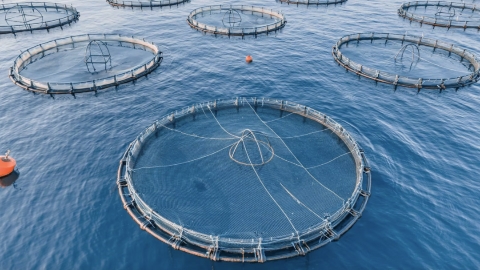
A promising solution to the looming shortage of omega-3 polyunstaurated fatty acids-particularly DHA and EPA-may lie genetically engineering a marine microorganism known as Schizochytrium limacinum, already widely used in industry for the sustainable production of lipids.
Researchers from the Harbin Institute of Technology and the Chinese Academy of Sciences have developed an efficient CRISPR/Cas9-based platform to reprogramme the metabolism of Schizochytrium limacinum. The aim: to significantly boost the production of nutritionally valuable omega-3 fatty acids-most notably DHA, and for the first time in this species, EPA as well.
Using a genetic transformation strategy mediated by Agrobacterium tumefaciens, the team achieved a 77.13% improvement in transformation efficiency and a gene-editing success rate of 48.38%. These advances led to the creation of modified strains with an enhanced ability to accumulate lipids and reroute metabolic pathways towards the synthesis of high-value polyunsaturated fatty acids.
The breakthough hinges on integrating two metabolic routes: the native polyketide synthase pathway, responsible for natural DHA production, and the fatty acid synthase pathway, which has now been functionally introduced to enable EPA synthesis in this organism for the first time.
Thanks to this genetic redesign, the researchers developed a strain capable of achieving lipid content equal to 77.14% of the cell’s dry weight, with DHA making up 55.10% and polyunsaturated fatty acids comprising 70.47% of the total. Under 5-litre bioreactor fermentation conditions, EPA output reached 1.95 grams per litre-more than ten times that of the unmodified strain.
This achievement marks a major step forward in the sustainable production of omega-3 oils-essential not only for human health but also as a key ingredient in aquaculture feed. As traditional sources such as fish oil face increasing pressure, the development of high-yield microbial strains is becoming a strategic priority.
“The CRISPR/Cas9 system we’ve developed provides a solid technical foundation for advancing metabolic engineering in Schizochytrium limacinum,” the researchers stated. Their study has recently been accepted for publication in the Chemical Engineering Journal.
The project was supported by China’s National R&D Programme and is expected to serve as a benchmark for future industrial developments in microbial production of omega-3 fatty acids.



